Tillandsia rubroviolacea
Click thumbnails for full size, scaled to a new window.
Tillandsia rubroviolacea
Collected by Rauh 1975 in southern Ecuador, 1300m. Dry climate.
*Ed. described as rubro-violacea but now in Taxon List without the hyphen.
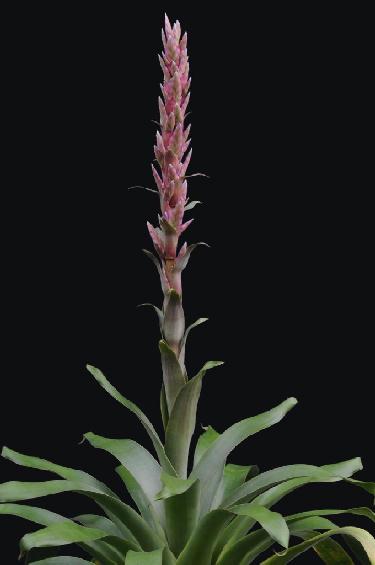
 Peter Tristram ... "I obtained a large plant of T. rubroviolacea from Timm Stolten at Heidelberg, collected by Rauh in South Ecuador in 1975. I also bought a smaller one from a collector which bloomed last year much smaller. It was compared to T. reuteri from Peru but, vegetatively, they are poles apart, though the inflorescences share some striking characters, especialy the bract shape and deep purple tips. The branches will elongate about another 10cm I expect. T. rubroviolacea is certainly a highly ornamental plant and long-lasting as last year’s bloom still has colour and a few new flowers. No doubt hybridisers would be interested! I am seeing if it will self too."
Peter Tristram ... "I obtained a large plant of T. rubroviolacea from Timm Stolten at Heidelberg, collected by Rauh in South Ecuador in 1975. I also bought a smaller one from a collector which bloomed last year much smaller. It was compared to T. reuteri from Peru but, vegetatively, they are poles apart, though the inflorescences share some striking characters, especialy the bract shape and deep purple tips. The branches will elongate about another 10cm I expect. T. rubroviolacea is certainly a highly ornamental plant and long-lasting as last year’s bloom still has colour and a few new flowers. No doubt hybridisers would be interested! I am seeing if it will self too."
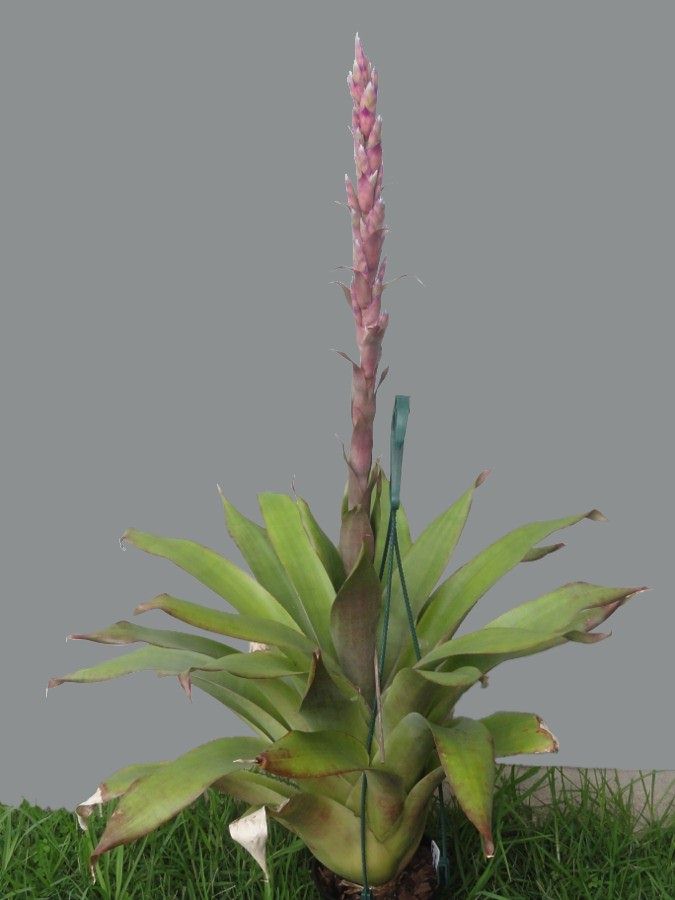

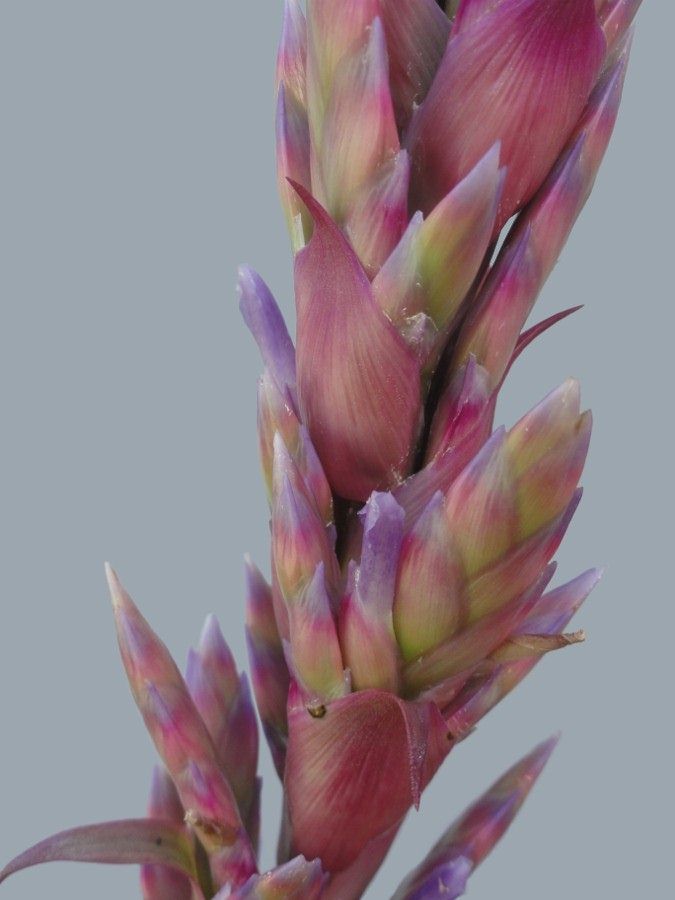
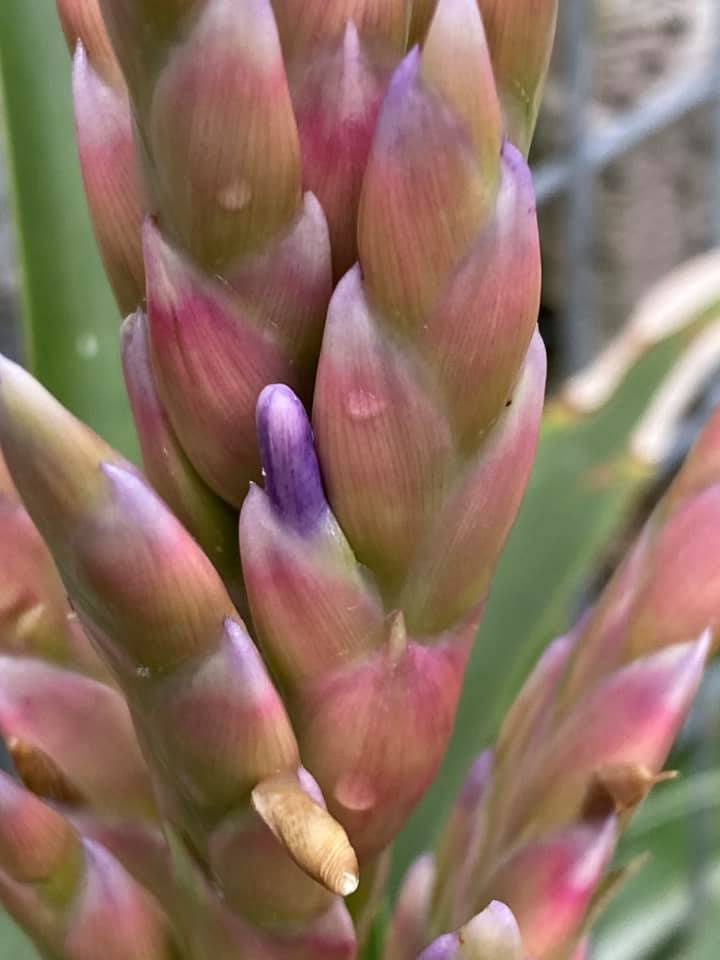
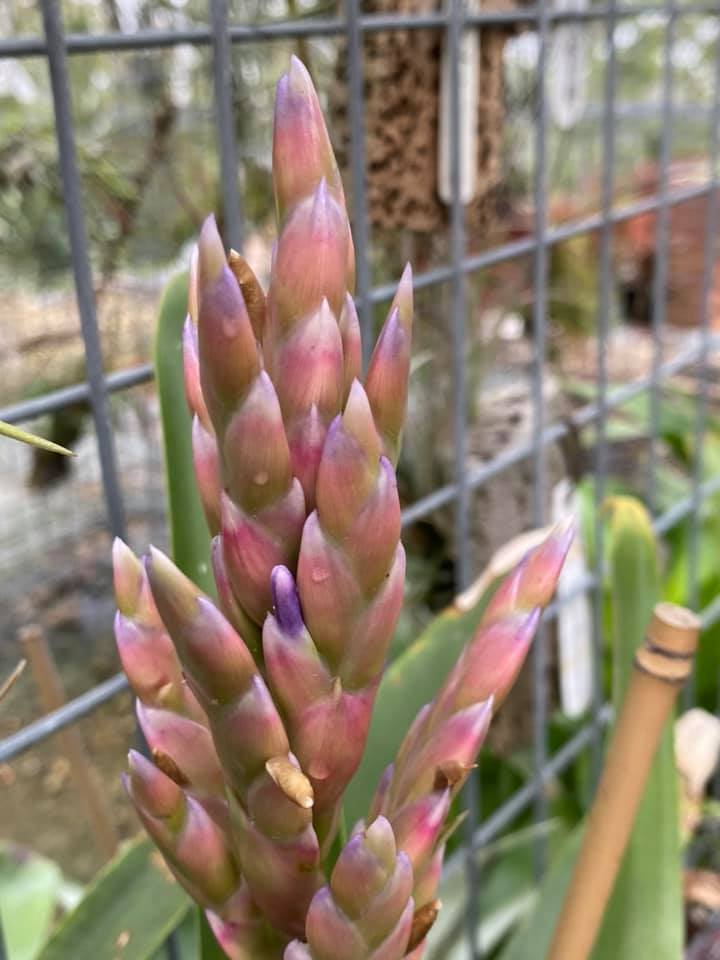
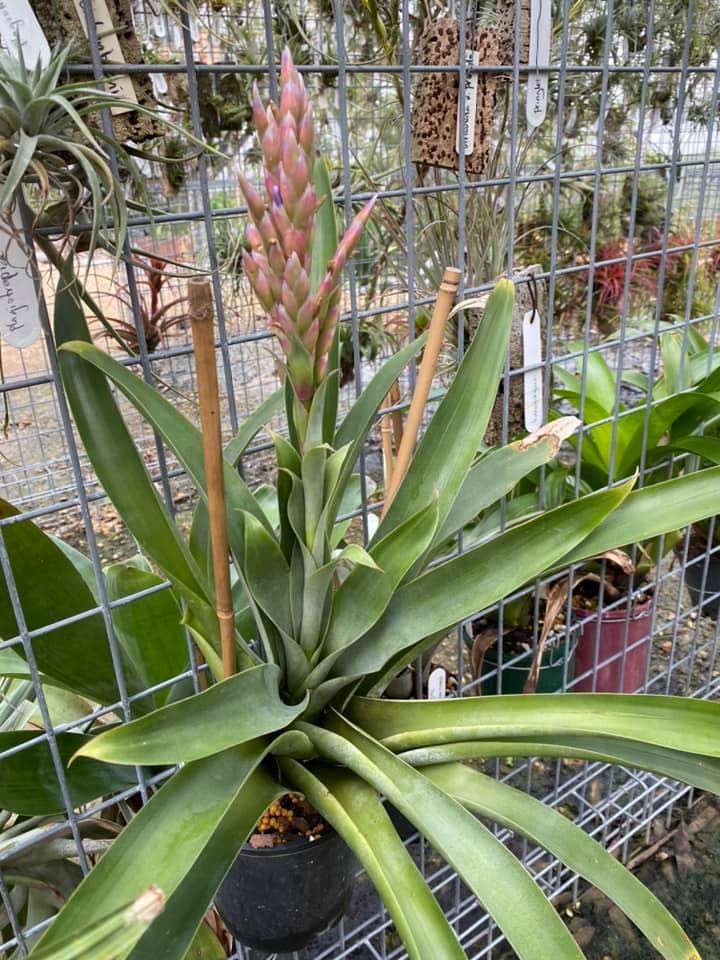
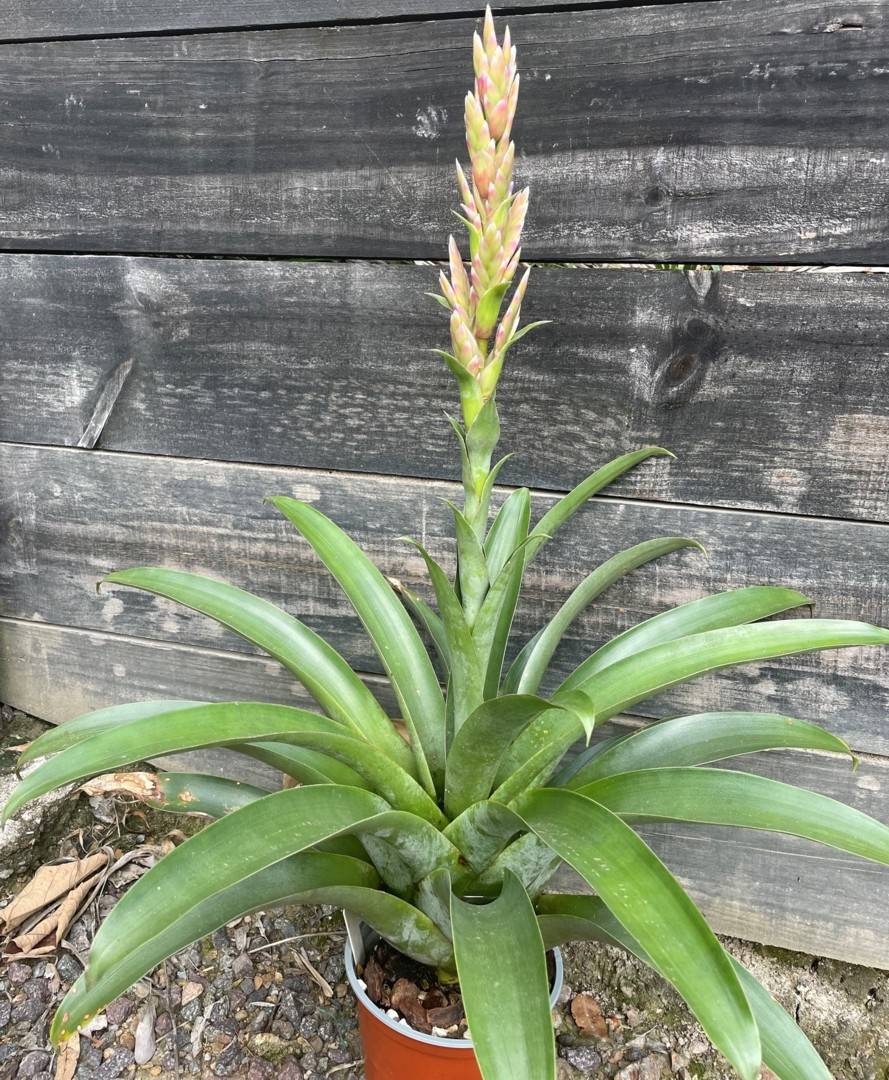
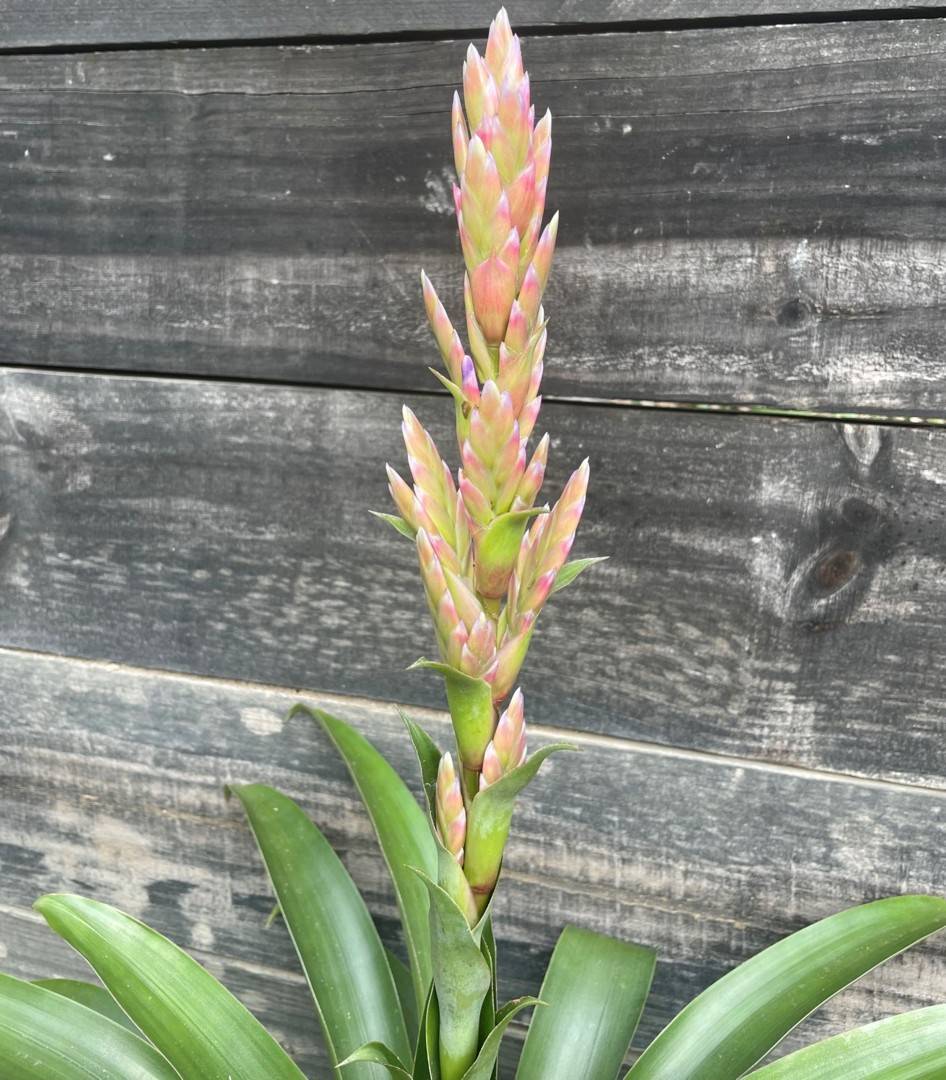
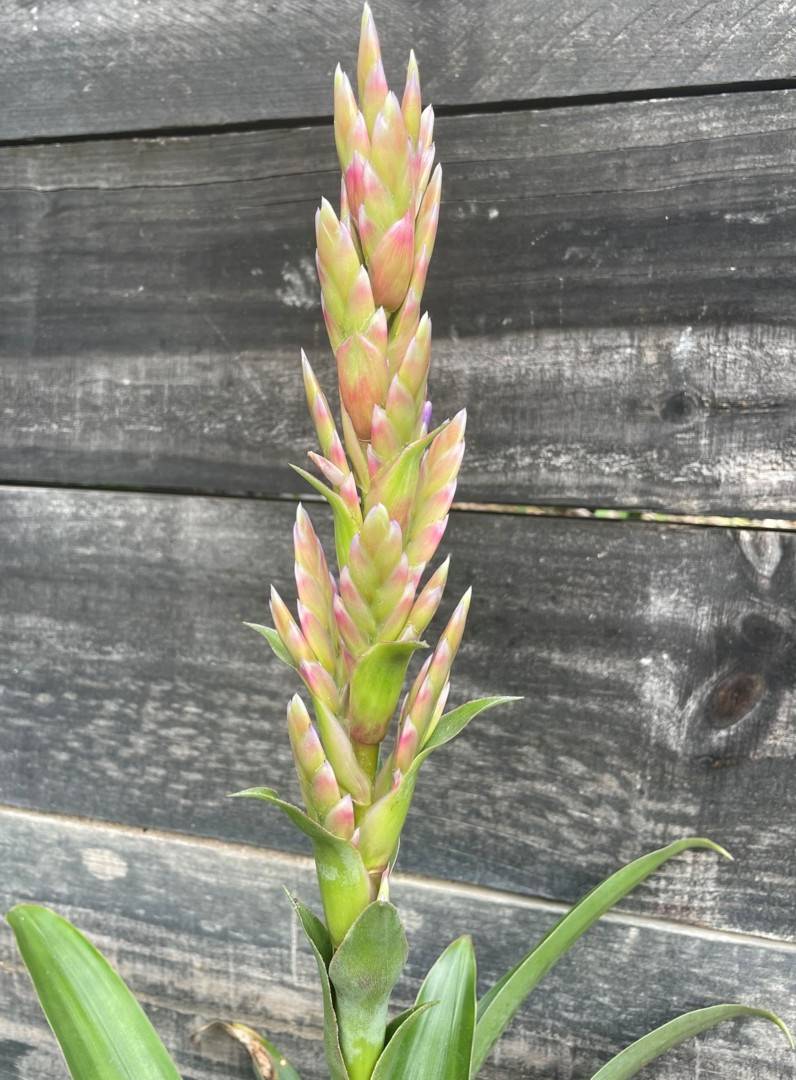
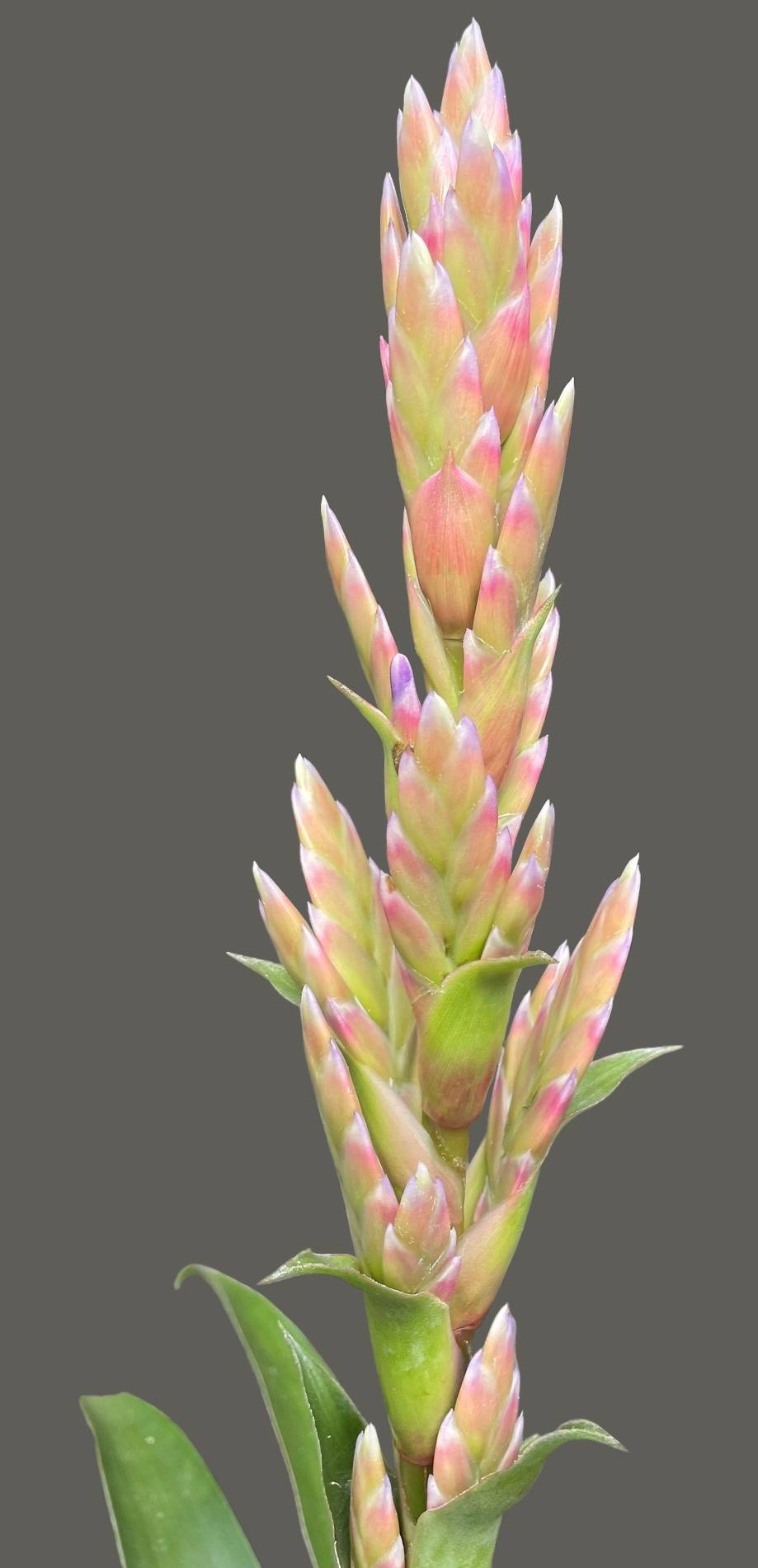

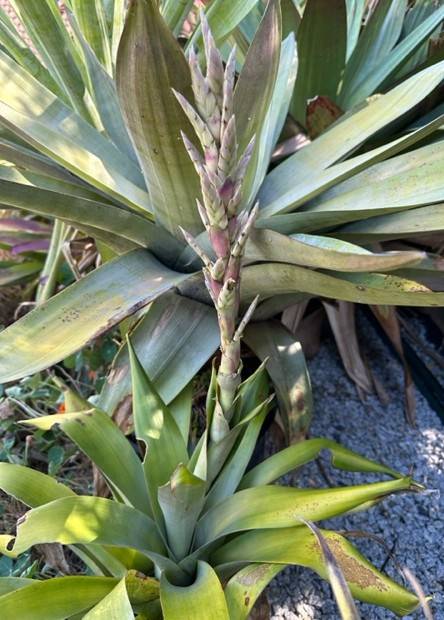

| John Olsen 02/23 |
Peter Tristram 02/23 |
Peter Tristram ... "I obtained this species on my first visit to Heidelberg BG, so it might be from there. It can get a lot larger too. One of mine has endured full sun, months of winter rain then occasional baking heat at Wardell but still looked OK for a pic a few weeks ago, though a bit bleached. I think it prefers more sheltered conditions."
Tillandsia rubro-violacea W Rauh, Trop Subtrop Pflanz. 27: 10-13. 1979
Planta acaulis florens 60-80 cm alta; folia numerosa, rosulam gracilem usque ad 80 cm
diametientem formantia; vaginae late ovales, indistincte limitatae, 20-25 cm longae, 12-13 cm latae, supra basi lilacino-badiae, subtus laetiores, glabrae; laminae ligulatae, attenuatae, 30-35 cm longae, 5-6 cm latae, utrimque dense minuteque appresso-lepidotae, subtus imprimis basi cereo-pruinosae; scapus inflorescentiae erectus, crassus, teres, viridis, glaber, plus minusve 50 cm longus, plerumque brevior quam folia rosulae; folia scapi erecta, scapo apposita, cum omnino involventia, basalia subfoliata, superiora oblongo-attenuata, vagina vinosa glabra, lamina patenti utrimque lepidota; inflorescentia bipinnata, dense cylindrica, 15-20 cm longa, 3-4 cm crassa, spicis plus minusve 15 erectis; bracteae primariae spicis breviores, basales foliis superioribus similes, superiores late ovales, plus minusve 15 cm longae, 2.3 cm latae apice brevissimo lepidoto, ceterum glabrae, splendentes carmineae, basim versus virescentes et basim spicarum amplectentes; spicae erectae axi angulato viridi appositae pedunculo brevi crasso viridi, complanatae, 5-9 cm longae, 2 cm latae, 5-6 florae; bracteae florales basales duae steriles, dense imbricatae, 2.5 cm longae, 1.5 cm latae, acuminatae distincte carinatae, glabrae, splendentes apice tantum leviter nervatae intense caeruleo-violaceae, ceterum carmineae, basim versus virides, tam longae quam sepala; sepala plus minusve 2.5 cm longa, plus minusve 8 cm lata, acuminata, menbranacea, apice pallide violacea, cererum viridia, glabra, posteriora carinata usque ad 7 mm connata; petala 3-3.4 cm longa, anguste linealia caeruleo-violacea, basi alba, apicibus albidis conniventia; antherae cum stylo inclusae; filamenta alba, applanata.
Habitat: Ecuador (Aequatoria) australis, ad rupes siccas prope Vilcabamba (Dptm. Loja) apud 1300 m.s.m.
Holotypus: Rauh 38328a, Sept. 1975, in herb. inst. bot. system. heidelbergensi (HEID).
Desc in J Brom Soc 30(3): 112-3. 1980
Plant stemless, flowering up to 80 cm high; leaves numerous forming a rosette of 80 cm in diameter;
Sheaths broad-ovate, 20-23 cm long, 12-13 cm wide, violet-brown in the base of the upper side, light-brown beneath;
Blades lingulate, attenuate, 30-35 cm long, 5-6 cm wide, on both sides adpressed lepidote and waxy near the base;
Scape erect, thick, round, glabrous, green;
Scape bracts the basal ones subfoliate, the upper ones long-ovate, attenuate, with a winered, glabrous sheath and a spreading lepidote, diverging blade;
Inflorescence bipinnate, cylindric, 10-20 cm long and 3-4 cm wide, with 15 erect spikes;
Primary bracts shorter than the spikes, carmine-red, green to the base, enfolding the bases of the spikes;
Spikes erect, adpressed to the inflorescence axis, short and stout pedicellated, complanate, 5-9 cm long, 2-3 cm wide, with 5-6 flowers;
Floral bracts densely imbricate, 2.5 cm long and 1.5 cm wide, intensive blue-violet at their tips, otherwise carmine-red and green to the base, equal to the sepals;
Sepals membranaceous, their acute tips pale-violet, the posterior ones carinate and for 7 mm connate;
Petals 3-3.4 cm long, narrow-lineal, blue-violet, whitish at the base;
Stamens and style included.
Type locality Southern Ecuador, on dry rocks near Vilcabamba (Dept Loja) about 1300m.
This decorative plant was collected near Vilcabamba, growing between rocks, under the number RAUH 38328a (Sept. 1975) HEID
Tillandsia rubro-violacea Notes from Trop Subtrop Pflanz
Finding T. rubro-violacea was a pure coincidence. It was collected as a T. secundifolia v. major because being a night flowerer, it was not in flower when found. In culture the plant has flowered two times and it was found to be a new species through its remarkable floral bract that is mainly red with an intensive blue at the tip. Unfortunately the colour difference is not apparent in the black and white photo. Using the Tillandsia key of LB Smith, the nearest we came to was T. kuntzeana Mez from Bolivia but it differs by the following points:
- Leaves wider than 3cm (to 6cm) with waxy frosting
- Scape short as the rosette leaves
- Inflorescence with approx. 15 stemmed spikes each to 9cm long, compared to bipinnate inflorescence with 4-5 sessile spikes
- Floral bracts are short and roughly as long as the sepals
The colours of neither the floral bracts nor the flowers can be compared with T. kuntzeana because they are not mentioned in the original description.
T. rubro-violacea has a similar habitat to T. reuteri in North Peru, however this plant possesses almost horizontal, extending, long stemmed, to 12 flowered spikes, the floral bracts are 3.5cm long, and petals to 5.5 cm long. Despite these differences it seems closer to T. reuteri.
Updated 16/03/23














